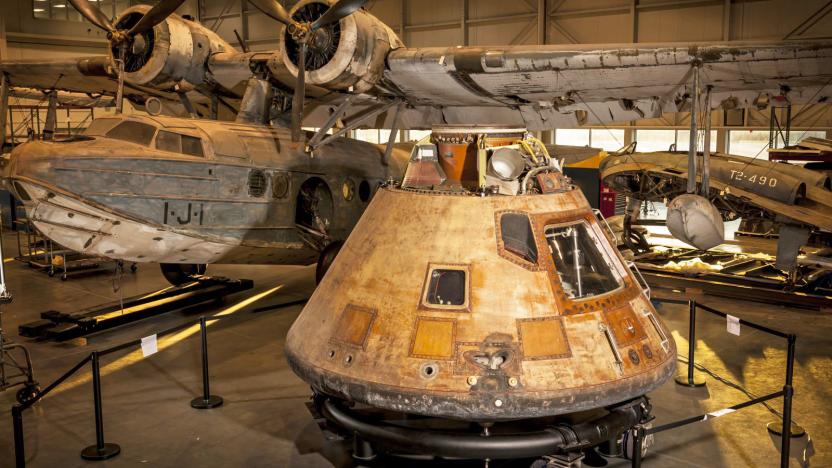nationalairandspacemuseum
Latest

Virgin Galactic donates SpaceShipTwo rocket motor to the Smithsonian
You might see a piece of private spaceflight history on display when you visit Washington, DC in the future. Virgin Galactic has donated SpaceShipTwo's (VSS Unity) historic rocket motor to the Smithsonian National Air and Space Museum. This is the powerplant that took the craft into space for the first time this past December, and represents both "technical achievement" as well as proof of what you can do through "entrepreneurial innovation," according to museum director Ellen Stofan.

Apollo 11's crew capsule is going on tour
The Apollo 11 space capsule was displayed around the country in 1970 and 1971, shortly after it safely brought Neil Armstrong, Buzz Aldrin and Michael Collins back from their iconic 1969 moon trip. Since then, the command module has lived in the Smithsonian's National Air and Space Museum. Over the next few years, though, the spacecraft will get some fresh air as it embarks on its first national tour in nearly half a century.

Neil Armstrong kept the original moon landing camera in his closet
If you were the first to set foot on a celestial body, wouldn't you keep a few mementos from the trip? The great Neil Armstrong certainly did -- including one of the most important gadgets in recent history. The Smithsonian National Air & Space Museum has revealed that the astronaut stored numerous items from the Apollo 11 moon landing in a closet at home, the highlight of which is undoubtedly the 16mm Data Acquisition Camera used to record the iconic moment he reached the lunar surface. Armstrong apparently held onto the camera and other "odds and ends" (as he told Mission Control) on the way back to Earth, and never mentioned them when he returned. Thankfully, you won't have much trouble seeing some of these artifacts in the near future. They're part of an exhibit at the museum, so you only have to book a trip to Washington, DC, by June 8th to see some of the technology that defined early space travel. [Image credit: Dane Penland, National Air and Space Museum, Smithsonian Institution]

